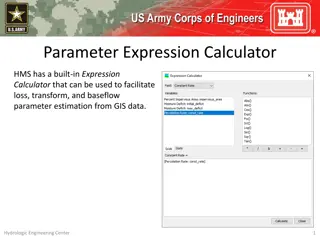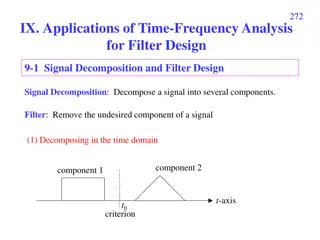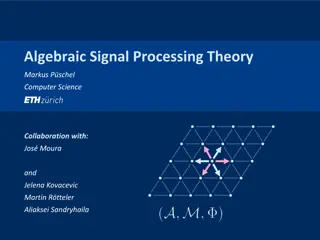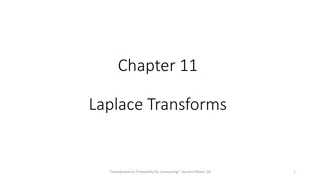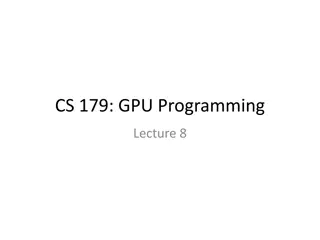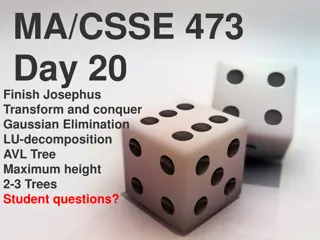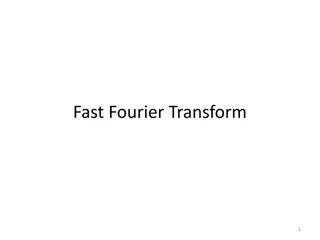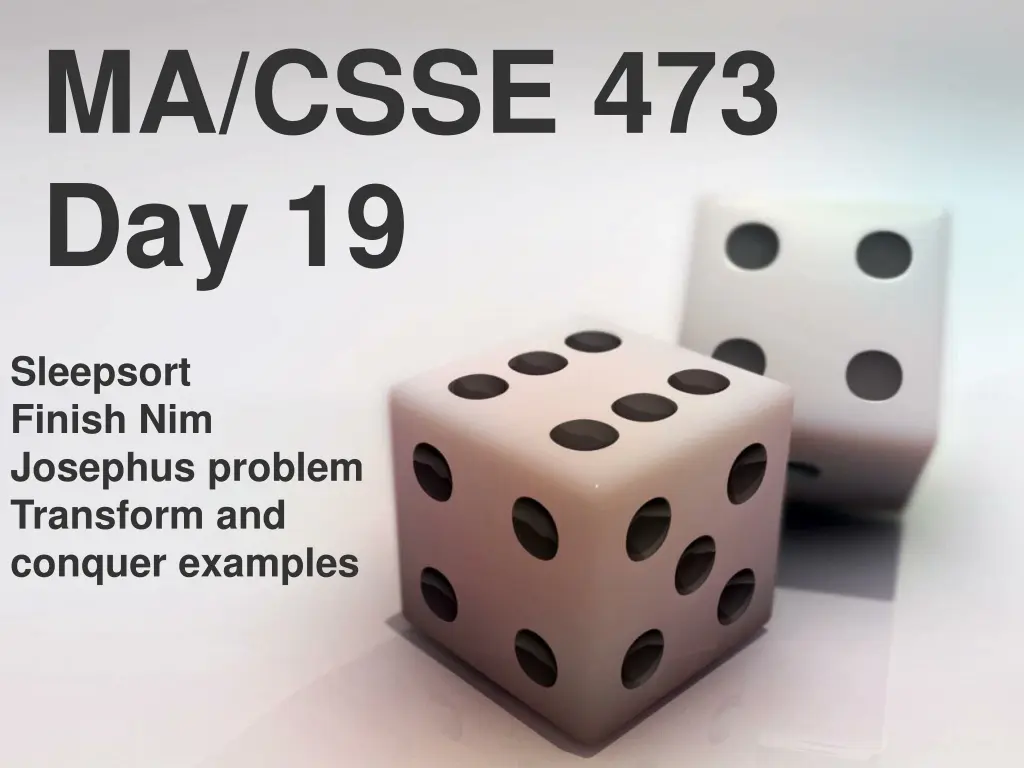
Exploring Multi-Pile Nim and Josephus Problem
Discover the strategies behind Multi-Pile Nim games and dive into the historical Josephus problem involving a Jewish general and historian. Explore winning strategies, proof notations, and background information surrounding these intriguing mathematical challenges.
Download Presentation

Please find below an Image/Link to download the presentation.
The content on the website is provided AS IS for your information and personal use only. It may not be sold, licensed, or shared on other websites without obtaining consent from the author. If you encounter any issues during the download, it is possible that the publisher has removed the file from their server.
You are allowed to download the files provided on this website for personal or commercial use, subject to the condition that they are used lawfully. All files are the property of their respective owners.
The content on the website is provided AS IS for your information and personal use only. It may not be sold, licensed, or shared on other websites without obtaining consent from the author.
E N D
Presentation Transcript
MA/CSSE 473 Day 19 Sleepsort Finish Nim Josephus problem Transform and conquer examples
MA/CSSE 473 Day 19 Announcement of Exam 2 allowed resource change Student Questions SleepSort demo Proofs of Nim strategy lemmas Josephus problem Transform and conquer what's it all about? Instance simplification: presorting Instance simplification: Gaussian elimination and LU decomposition (Representation change: AVL trees)
Recap Multi-Pile Nim There are multiple piles of chips. Two players take turns by removing from any single pile at least one and at most all of that pile's chips. (The number of chips taken can vary from move to move) The winner is the player who takes the last chip. What is the winning strategy for 2-pile Nim? For the general case, consider the "Nim sum", x y, which is the integer obtained by bitwise XOR of corresponding bits of two non-negative integers x and y. What is 6 3?
Recap: Multi-Pile Nim Strategy Solution by C.L. Bouton: The first player has a winning strategy iff the nim sum of the "pile counts" is not zero. Let's prove it. Note that is commutative and associative. Also note that for any non-negative integer k, k k is zero.
Multi-Pile Nim Proof Notation: Let x1, ,xn be the sizes of the piles before a move, and y1, ,yn be the sizes of the piles after that move. Let s = x1 xn, and t = y1 yn. Observe: If the chips were removed from pile k, then xi = yi for all i k, and xk > yk . Lemma 1: t = s xk yk . Lemma 2: If s = 0, then t 0. Lemma 3: If s 0, it is possible to make a move such that t=0. [after proof, do an example]. Proof of the strategy is then a simple induction. (It's a HW problem) Example: 3 piles, containing 7, 13, and 8 chips.
Josephus problem - background Flavius Josephus was a Jewish general and historian who lived and wrote in the 1st century AD Much of what we know about 1st century life in Israel (and the beginnings of Christianity) before and after the Roman destruction of the Jewish temple in 70 AD comes from his writings The "Josephus problem" is based on an odd suicide pact that he describes He and his men stood in a circle and counted off Every other person (or every third person, accounts vary) was killed The last person was supposed to kill himself He must have been the next-to-last person! When it got down to two people, he persuaded the other person that they should surrender instead http://en.wikipedia.org/wiki/Josephus
Josephus Problem n people, numbered 1-n, are in a circle Count starts with 1 Every 2nd person is eliminated The last person left, J(n), is the winner Examples: n=8, n=7 J(1) = 1 Solution if n is even: Solution if n is odd: Use it to find J(2) J(8) Clever solution: cyclic bit shift left












